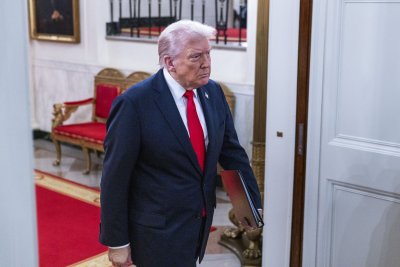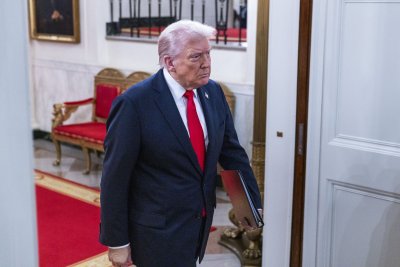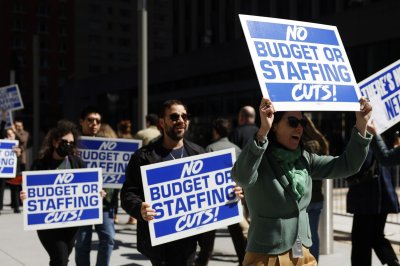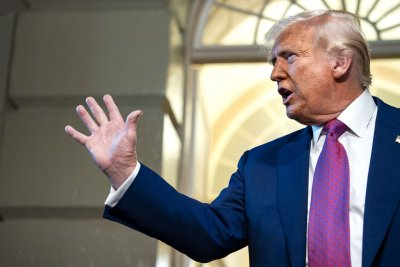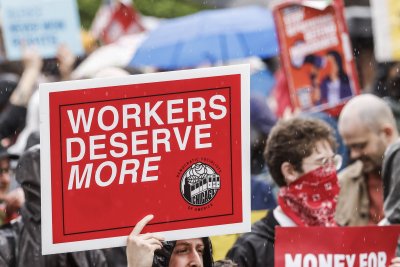Judge orders Trump administration to halt federal mass firings
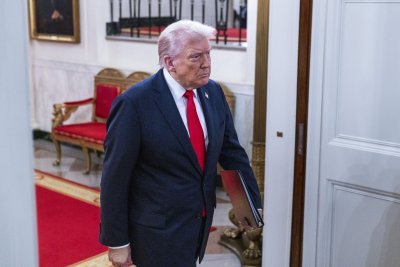
Oct. 15 (UPI) — A federal judge on Wednesday ordered the Trump administration to halt firings of workers amid the shutdown, according to two labor unions that brought the lawsuit against the federal government.
The Trump administration on Friday announced that it has begun laying off 4,100 federal workers as the federal purse has run dry with Congress since Oct. 1, failing to pass a stopgap funding bill to keep the government open.
On Sept. 30, ahead of the shutdown and amid Trump administration threats to institute mass firings if the government shuttered, the American Federation of Government Employees, with the American Federation of State, County and Municipal Employees, filed a lawsuit challenging the legality of the layoffs.
Then on Oct. 4, the union filed a motion for a temporary restraining order.
On Wednesday, Judge Susan Illston of the U.S. District Court for the Northern District of California sided with the unions, issuing the temporary restraining order they sought, stating that the reduction-in-force notices issued to the more than 4,000 federal employees were likely illegal, exceeded the Trump administration’s authority and were capricious.
In her order, the appointee of President Bill Clinton described Trump’s mass firings amid a government shutdown as “unprecedented.”
Illston outlined how some employees could not even find out if they had been fired because the notices were sent to government email accounts, which they may not have access to because of the shutdown.
Those who do receive the notices are then unable to prepare for their terminations because human resources staff have been furloughed, she said, adding that in one case at the U.S. Centers for Disease Control and Prevention, human resources staff were brought back into the office to issue the layoff notices only to then be directed to lay themselves off.
She then said, citing a social media post from the president on the second day of the shutdown, saying he had a meeting with Russell Vought, the White House budget chief, to determine which of the many “Democrat Agencies” to cut that Trump intended to make the cut as retribution over the Democrats opposing the funding measure.
“It is also far from normal for an administration to fire line-level civilian employees during a a government shutdown as a way to punish the opposing political party,” Illston wrote. “But this is precisely what President Trump has announced he is doing.”
Illston gave the administration two days to provide the court with more information on the issued notices.
“This decision affirms that these threatened mass firings are likely illegal and blocks layoff notices from going out,” Lee Saunders, president of AFSCME, said in a statement.
“Federal workers have already faced enough uncertainty from the administration’s relentless attacks on the important jobs they do to keep us safe and healthy.”
As the order was issued, Vought said that he expects thousands of federal workers to be fired in the coming days.
“Much of the reporting has been based on kind of court snapshots, which they have articulated as in the 4,000 number of people,” he said on The Charlie Kirk Show podcast. “But that’s just a snapshot, and I think it’ll get much higher. And we’re going to keep those RIFs rolling throughout the shutdown.”
The government shut down at the start of this month amid a political stalemate in Congress, as the Republicans do not have enough votes to pass their stopgap bill without Democrats crossing the aisle.
Democrats said they will only support a stopgap bill that extends and restores Affordable Care Act premium tax credits, arguing that failing to do so would raise healthcare costs for some 20 million Americans.
Republicans — who control the House, Senate and the presidency — are seeking a so-called clean funding bill that includes no changes. They argue that the Democrats are fighting to provide undocumented migrants with taxpayer-funded healthcare, even though federal law does not permit them to receive Medicaid or ACA premium tax credits.
The parties continue to trade blame for the shutdown as it extends for more than two weeks, with some 750,000 federal workers furloughed.
